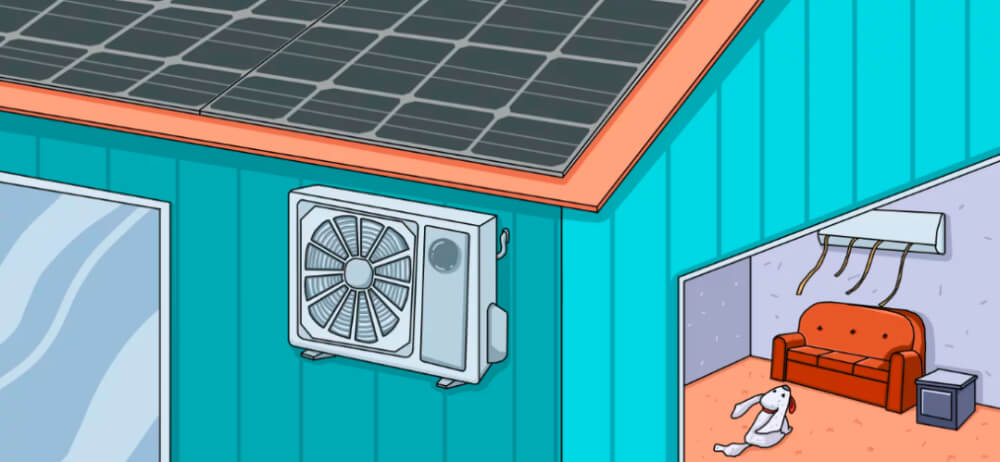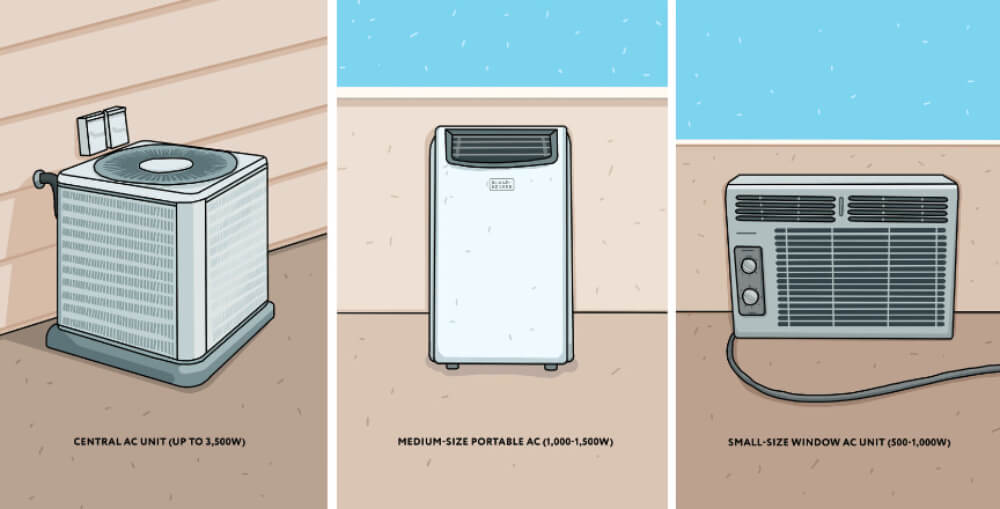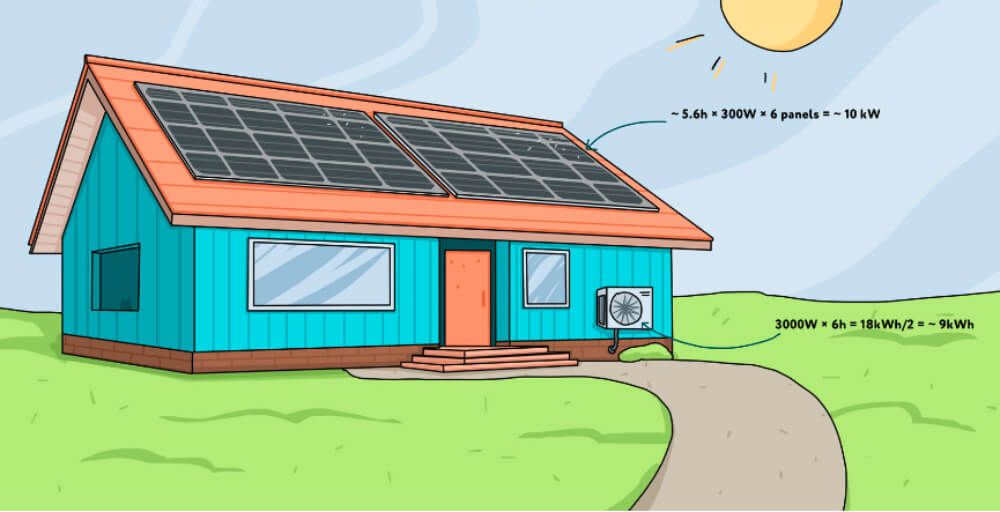It is possible to run an air conditioner with solar power
 namkoo solar
namkoo solar
It is possible to run an air conditioner with solar power, how many photovoltaic panels does it need?
It is often said that solar panels generate enough electricity to power everything in your home. However, the AC unit presents a separate challenge - it is the appliance with the highest energy demand in your home. Thinking about adding an AC unit to your home and wondering if you can run it on solar power? In this article, we'll explore exactly how much energy it requires, and how many panels it would take to produce that amount on a regular basis.

Air conditioning units account for 20% of your home's energy consumption
First, let's look at the energy consumption of the air conditioning unit itself. Is it any different than a toaster or a computer? The pure numbers suggest it is. According to the U.S. Energy Information Administration, the average American house uses about 10,812 kilowatts of electricity per year. An air conditioning unit requires 20 percent of this amount - it uses about 2,000 kilowatts per year. In hot areas of the United States, such as Arizona or Texas, this number is even higher.
The exact amount of energy used depends greatly on the size and type of air conditioning unit you choose. The cooling capacity of an air conditioner translates somewhat into its wattage, as follows: 1 ton of cooling power requires slightly more than 1,000 W. A central air conditioning system that can handle an entire house uses about 3,500 W. A medium-sized air conditioning unit requires about 1,000-1,500 watts of power. Smaller units for smaller rooms can have up to 500 watts of power.
To get the daily energy consumption of an AC device, you need to multiply its wattage by the estimated operating hours. However, the whole calculation becomes confusing because:
1、The presence of people and animals in the room where the AC unit is working increases the amount of energy it consumes.
2、The air conditioner tries to cool every item in the room: the more things around it, the more power it consumes.
3、The air conditioning unit needs extra energy to start working, but then it takes much less energy to maintain the required temperature than to actually cool the air.

Therefore it is sometimes recommended to halve the calculated energy obtained. What you will end up with is the additional solar panels needed to generate the daily electricity to support your air conditioning unit.
To understand the principle, let's consider the simplest case: the air conditioner and the solar panels work at the same time. In this case, we simply divide the amount of electricity used by the AC unit by the wattage of the panels. For example, four 300 W panels would be enough to support a 1200 W AC system. Now, let's move on to a more realistic, and therefore more complex, example.
Case Study: Running a Central Air Conditioning System with Solar Power in an LA Home

We have decided to install a central air conditioning system in a house somewhere in Los Angeles. It is rated at 3000 W. We will set 6 hours as the estimated daily operating time, assuming it will only be used during the hottest part of the day.
3000 W * 6h = 18 kWh
Assuming that the air conditioning unit spends most of its time maintaining the temperature, we divide this number by 2
18 kWh ÷ 2 = 9 kWh
This is the amount of energy required by the air conditioning unit per day, and it is easy to find out how much it costs. in December 2020, Los Angeles residents paid an average of 20.8 cents per kWh
20.8 cents * 9 kWh = $1.87
This is the cost of running an AC unit in Los Angeles for one day. That's $56 per month, or $682 per year. Very much. Given that the average cost of an AC unit is just over $4,000, this is the equivalent of buying a new unit every 5-6 years. In contrast, solar panels in Los Angeles can pay for themselves in about 6 years. Running air conditioning on solar helps speed up the process.
Well, to run an AC unit on solar, we need about 9 kW per day from the PV module. the average peak sunlight hours in Los Angeles are 5.6 hours - that's the time when the irradiance reaches 1000W/m2 and the panels are running at maximum.
9 kWh ÷ 5.6 hours = 1607 watts
You can generate that much power with six 300-watt solar panels. In fact, they will produce 1800 W, which is even more than needed. However, this extra energy will come in handy.
While we do expect AC devices to consume less energy than we calculate, the performance of solar panels can be affected by the weather and their location. In addition, the batteries and charge controllers are not 100% efficient, so some current will inevitably be lost in the process. Therefore, it is best to leave 20-25% more power in the air conditioner just in case.
9 kWh * 1.2 = 10.8 kWh
About 11 kW of solar power should be sufficient for our needs. Six 300 W panels produce slightly less than:
1800 W * 5.6 h = 10.08 kWh
We can leave these panels as they are, or replace one or two of them with 330 W modules to compensate for the difference. Don't forget that these six modules are only intended to cover air conditioning units. When sizing a solar PV system, we also need to consider all other equipment.
Case study: Adding a small air conditioning unit to a Minnesota house in the summer
Imagine a house somewhere in Minnesota. One study showed that it was too hot to work there in the summer. We installed a small AC power supply that required 500 watts of power. It works for 6 hours, 5 days a week. So, theoretically, the AC unit would require up to 3 kW of power per weekday. The peak hours of sunlight in Minnesota during the summer are 5.4 hours.
3 kW ÷ 5.4 h = 555 W * 1.25 (margin) ≈ 700 W
You can get an additional 700 W by extending your solar panel system with two additional 350 W panels, but is it necessary to add them if they won't be as useful in the fall, winter and spring? Well, probably not.
AC units are only needed in the summer when the solar panels receive more sunlight than usual during the day and therefore produce more power. On average, solar panel systems generate 50% more electricity in July and August than in December and January. So if your existing solar array produces enough power to meet your winter energy needs, leave it as is: a small AC unit won't be too much of a burden.



































